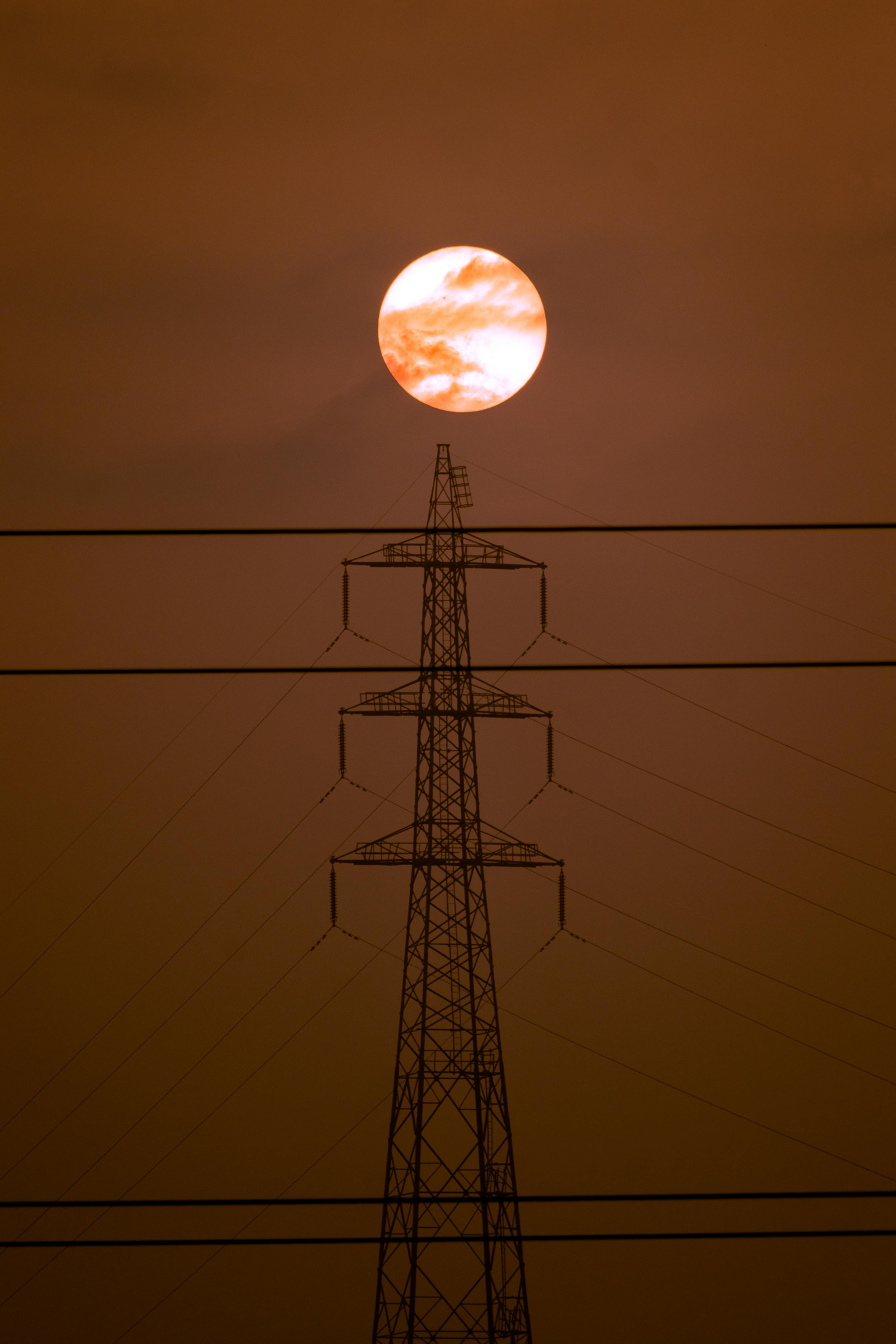Power Management Tips: Energy-Saving for Improved PC Speed
In today’s fast-paced digital world, optimizing your computer’s performance and conserving energy are essential. By implementing power management strategies, you can achieve both goals simultaneously. This article will provide you with a comprehensive guide on power management tips and energy-saving techniques to enhance your PC’s speed.
1. Adjust Power Settings
1.1 Choosing the Balanced Power Plan
The Balanced Power Plan is a recommended starting point as it balances energy efficiency and performance. It adjusts your PC’s power usage based on your usage patterns, providing an optimal balance between speed and energy conservation.
1.2 Customizing the Power Plan
Customize your power plan to meet your specific needs by modifying settings such as brightness, screen timeout, and sleep times. Adjusting these settings can have a significant impact on your PC’s overall energy consumption and speed.
1.3 Modifying Sleep and Hibernate Settings
By modifying sleep and hibernate settings, you can determine the periods of inactivity when your PC enters power-saving modes. Adjusting these settings can help conserve energy when your computer is not in use, while also improving its speed when you resume your work.
With these power management tips and energy-saving measures, you can optimize your PC’s performance while reducing energy consumption. Implementing these techniques will not only benefit you but also the environment.
 Startup Programs” alt=”Power Management Tips: Energy-Saving For Improved PC Speed 2. Optimize Startup Programs” style=”max-height: 500px; max-width: 100%;”/>
Startup Programs” alt=”Power Management Tips: Energy-Saving For Improved PC Speed 2. Optimize Startup Programs” style=”max-height: 500px; max-width: 100%;”/>
This image is property of images.pexels.com.
## 2. Optimize Startup Programs
Is your computer taking forever to start up? Are you constantly frustrated by the sluggishness of your PC? Well, we have some good news for you – optimizing your startup programs can significantly improve your PC’s speed and performance.
2.1 Analyzing and Managing Startup Programs
The first step in optimizing your startup programs is to analyze and manage them effectively. Take a closer look at the programs that are set to launch automatically when you start your computer. Identify which ones are essential and which ones can be safely disabled.
2.2 Disabling Unnecessary Startup Programs
Once you have identified the unnecessary programs, disable them to prevent them from consuming valuable system resources and slowing down your PC. You can do this by accessing the Task Manager or using specialized software that allows you to manage startup programs. Remember to only disable programs that you are confident you don’t need during startup.
2.3 Utilizing Startup Delay
Another useful tip is to utilize the startup delay feature. This allows you to stagger the launch of certain programs, preventing them from all starting simultaneously and causing a slowdown. It gives your computer more time to allocate resources effectively and ensures a smoother startup process.
By optimizing your startup programs, you can minimize the strain on your computer’s resources, leading to improved speed and performance. So go ahead, follow these power management tips, and experience the difference on your PC today.

This image is property of images.pexels.com.
Power management is an essential aspect of optimizing your computer’s performance and extending its battery life. By monitoring and controlling background processes, you can ensure that your PC operates efficiently without draining excess energy.
3. Monitor and Control Background Processes
3.1 Identifying Resource-Intensive Processes
To begin, it is crucial to identify the resource-intensive processes that are consuming a significant amount of your computer’s power. Task Manager, a built-in Windows utility, allows you to monitor the CPU, memory, and disk usage of each process. By identifying the culprits, you can take appropriate measures to reduce their impact on your PC’s speed and energy consumption.
3.2 Managing Background Processes
Once you have identified resource-intensive processes, you can effectively manage them to enhance your computer’s energy efficiency. Consider closing unnecessary applications or disabling startup programs that are not essential. This will help free up system resources and improve overall performance.
3.3 Setting Process Execution Priorities
Furthermore, you can prioritize certain processes to ensure that critical tasks receive sufficient resources while running in the background. By adjusting the priority levels, you can allocate more system resources to high-priority processes, resulting in smoother performance and reduced power consumption.
By monitoring and controlling background processes, you can optimize your PC’s energy usage, leading to improved speed and overall performance. Implement these power management tips today to enhance your computing experience.
Utilize Power Management Features
Power-Saving Sleep Mode
When it comes to energy-saving strategies for your PC, utilizing power management features is crucial. One of the most effective features to optimize energy consumption is the Power-Saving Sleep Mode. By enabling this mode, your computer will minimize power usage while still allowing for quick wake-up times. This means that when you’re not actively using your PC, it will automatically go into a low-power state, conserving electricity.
Hibernation vs. Sleep
Another power management feature to consider is the difference between Hibernation and Sleep modes. In Hibernation mode, your PC saves its current state to the hard drive and completely powers off, consuming no energy. On the other hand, Sleep mode maintains a low-power state, keeping your current session and data in the memory, allowing for faster wake-up times. Choosing between these two modes depends on your usage patterns and preferences.
Hybrid Sleep Mode
For those who want the best of both worlds, the Hybrid Sleep mode is worth considering. This mode combines elements of both Sleep and Hibernation modes, saving your current state to the hard drive while also keeping it in memory. As a result, if there is a power outage, your PC will still recover your session and data from the hard drive, ensuring that no work is lost.
By properly utilizing and configuring your power management features, you can reduce energy consumption and improve the speed and efficiency of your PC. So don’t forget to take advantage of these options and enjoy a more energy-efficient computing experience.

This image is property of images.pexels.com.
## Update Operating System and Drivers
Updating your operating system and device drivers regularly is crucial for optimizing your PC’s performance and energy efficiency. By keeping your system up to date, you ensure that it runs smoothly, reduces power consumption, and enhances overall speed. Here’s why regular updates are beneficial and how to perform them effortlessly:
Benefits of Regular Updates
Regular updates provide several advantages to your PC. They include bug fixes, security patches, and enhancements that can boost performance, stability, and power management capabilities. By installing these updates, you ensure that your system is running on the latest technology and optimized for energy efficiency, leading to improved PC speed and decreased power consumption.
Checking for Operating System Updates
To check for operating system updates, you need to navigate to the settings of your computer. On Windows, you can go to the “Settings” menu, click on “Update & Security,” and then select “Check for updates.” On macOS, click on the Apple menu, choose “System Preferences,” and select “Software Update.” Make sure to install any available updates to keep your operating system running smoothly.
Updating Device Drivers
Updating device drivers is equally important for improved PC speed. Device drivers are software programs that enable communication between your operating system and various hardware components, such as the graphics card, network adapter, and printer. Outdated drivers can result in performance issues and power inefficiencies. Visit the website of your device manufacturer to download the latest drivers and follow the installation instructions provided.
Keeping your operating system and device drivers up to date is a simple yet effective way to optimize your PC’s power management and overall performance. Take a few minutes to check for updates regularly, and you’ll notice a significant improvement in both energy-saving and speed.
Manage Display Settings
Your computer’s display settings can have a significant impact on its energy consumption and overall performance. By making a few adjustments, you can optimize your display settings to conserve energy and improve your PC’s speed.
Adjusting Screen Brightness
One simple way to save energy is by adjusting your screen brightness. Lowering the brightness level can reduce power consumption significantly. Most computers have a dedicated function key that allows you to quickly adjust the brightness. Experiment with different levels until you find the balance between brightness and energy efficiency that suits you.
Utilizing Power Saver Mode
Another effective way to save energy is by utilizing your computer’s power saver mode. This mode automatically adjusts various settings, such as screen brightness and system performance, to maximize energy efficiency. Enable power saver mode when you are using your PC for activities that do not require high performance, such as web browsing or document editing.
Enabling Sleep After Inactivity
Enabling sleep mode after a period of inactivity can help conserve energy when you are not actively using your computer. Sleep mode puts your PC into a low-power state, reducing energy consumption significantly. To enable this feature, go to your computer’s power settings and set the sleep timer according to your preferences.
By managing your display settings effectively, you can save energy and improve your PC’s speed, providing a more efficient and seamless computing experience.
Optimize Cooling and Ventilation
Cleaning Dust and Dirt
One of the easiest ways to optimize cooling and ventilation for your PC is by regularly cleaning the dust and dirt that accumulate inside. Over time, these particles can clog up the fans and vents, preventing proper airflow and causing your system to overheat. To avoid this, use compressed air or a soft brush to gently remove the dust from the cooling components. You should also consider cleaning the external surfaces of your PC to ensure efficient cooling.
Proper Placement and Airflow
The placement of your computer can greatly affect its cooling and ventilation. Make sure to position it in a well-ventilated area, away from heat sources such as direct sunlight or radiators. Additionally, ensure that there is sufficient space around the computer for proper airflow. Avoid placing your PC inside cabinets or enclosed spaces as this can restrict airflow and lead to overheating.
Cooling Pads and External Fans
To further enhance cooling and ventilation, you can invest in cooling pads or external fans. Cooling pads are designed to provide additional airflow and reduce heat buildup, especially for laptops. External fans can be placed strategically to increase air circulation around your desktop computer. These accessories can be easily attached and offer an affordable solution to help keep your PC running smoothly.
By optimizing cooling and ventilation, you can prevent your PC from overheating and improve its overall speed and performance. Regularly cleaning dust and dirt, positioning your computer correctly, and considering additional cooling solutions will ensure that your PC stays cool even during demanding tasks.
Utilize Energy-Saving Peripherals
Energy-saving peripherals are a great way to improve your PC speed while reducing your energy consumption. By opting for energy-efficient monitors, eco-friendly printers and scanners, and power-saving external storage devices, you can make a positive impact on the environment while enjoying a faster and more efficient PC experience.
Energy-Efficient Monitors
Investing in an energy-efficient monitor is a smart choice for both the environment and your PC speed. Look for monitors with energy-saving features such as automatic brightness adjustment and power-saving modes. These monitors conserve energy by adjusting the screen brightness based on ambient light conditions, making them more energy-efficient while providing optimal visual clarity.
Eco-friendly Printers and Scanners
When it comes to printers and scanners, choose eco-friendly options that prioritize energy efficiency. Look for devices with built-in energy-saving features like automatic duplex printing, which reduces paper waste and energy consumption. Additionally, consider devices with sleep or idle modes that automatically power down when not in use. Being mindful of energy-efficient printing and scanning practices can make a significant difference in both your PC speed and energy consumption.
Power-Saving External Storage Devices
External storage devices are essential for expanding your PC’s storage capacity, but they can also consume a significant amount of energy. Opt for power-saving external storage devices that have low power consumption while still providing ample storage space. Look for devices that automatically enter sleep or standby mode when inactive for a certain period. By using energy-saving peripherals for your external storage needs, you can maintain PC speed without sacrificing energy efficiency.
By utilizing energy-saving peripherals like monitors, printers, scanners, and external storage devices, you can enhance your PC speed while minimizing your environmental impact. Incorporating these energy-saving tips into your PC setup not only benefits you by improving performance but also contributes to a sustainable future. So, make the switch to energy-efficient peripherals today and enjoy a faster, more eco-friendly computing experience.
Utilize Power Management Software
Power management software is a valuable tool that allows you to control and optimize the energy usage of your computer. By implementing power management software, you can both save energy and improve the speed and performance of your PC.
Features and Benefits of Power Management Software
Power management software offers a range of features that can help you efficiently manage your computer’s power consumption. These features include automated power plans, scheduled shutdowns, and power usage reports. By taking advantage of these features, you can ensure that your computer is only using the necessary amount of power, reducing energy waste and lowering your electricity bills.
Popular Power Management Tools
There are numerous power management tools available in the market, each with its own set of features and benefits. Some popular options include Intel Power Manager, Microsoft PowerToys, and TLP (Linux Advanced Power Management). These tools offer user-friendly interfaces and allow you to easily customize and control the power settings of your PC.
Customizing Power Profiles
One of the key advantages of power management software is the ability to customize power profiles according to your specific needs. You can create different profiles for different scenarios, such as “High Performance” for demanding tasks or “Power Saver” for energy conservation. Customizing your power profiles ensures that your PC operates at the optimal energy level for each situation, maximizing both speed and energy efficiency.
With the help of power management software, you can effectively save energy while improving the speed and performance of your PC. By utilizing the features and benefits offered by these tools and customizing your power profiles, you can achieve a more efficient and eco-friendly computing experience. If you’re looking to improve the speed and performance of your PC while also saving on energy costs, there are several power management tips that you can implement. In this article, we will discuss some hardware upgrades and adjustments you can make to optimize your PC’s power consumption while enhancing its speed.
10. Consider Hardware Upgrades
10.1 Upgrading to Energy-Efficient Components
One way to reduce the power consumption of your PC is by upgrading to energy-efficient components. Look for processors, memory modules, and power supplies that are designed to consume less energy while still delivering excellent performance. These components are not only good for the environment but can also help to prolong the lifespan of your PC.
10.2 Investing in Solid State Drives (SSD)
Solid-state drives (SSDs) consume less power compared to traditional hard disk drives (HDDs). By replacing your HDD with an SSD, you not only benefit from faster loading times and improved overall system performance but also from reduced power usage. SSDs are more energy-efficient due to their lack of moving parts, making them an excellent choice for energy-conscious users.
10.3 Opting for Low-Power Graphics Cards
Graphics cards can consume a significant amount of power, especially if you’re a gamer or work with graphic-intensive applications. Consider upgrading to low-power graphics cards that provide optimized performance while still minimizing energy consumption. These cards often have advanced power management features that allow you to strike a balance between speed and energy efficiency.
By implementing these hardware upgrades and adjustments, you can optimize your PC’s power consumption while improving its speed and performance. These energy-saving tips are not only beneficial for the environment but also for your wallet. So why not start implementing them today and enjoy a faster, more energy-efficient PC experience?

4 replies on “Power Management Tips: Energy-Saving For Improved PC Speed”
[…] implementing these power management strategies such as adjusting power settings and enabling write caching, you can optimize your hard […]
[…] the lifespan of your monitors and reduce energy consumption by utilizing power management features. Enable sleep mode or power-saving options that automatically turn off the monitors after […]
[…] for software updates. These updates often include battery-specific improvements, such as enhanced power management settings or bug fixes that can maximize battery life. Look for these updates in your laptop’s […]
[…] power management can protect your valuable equipment from power surges, ensure uninterrupted workflow during power […]